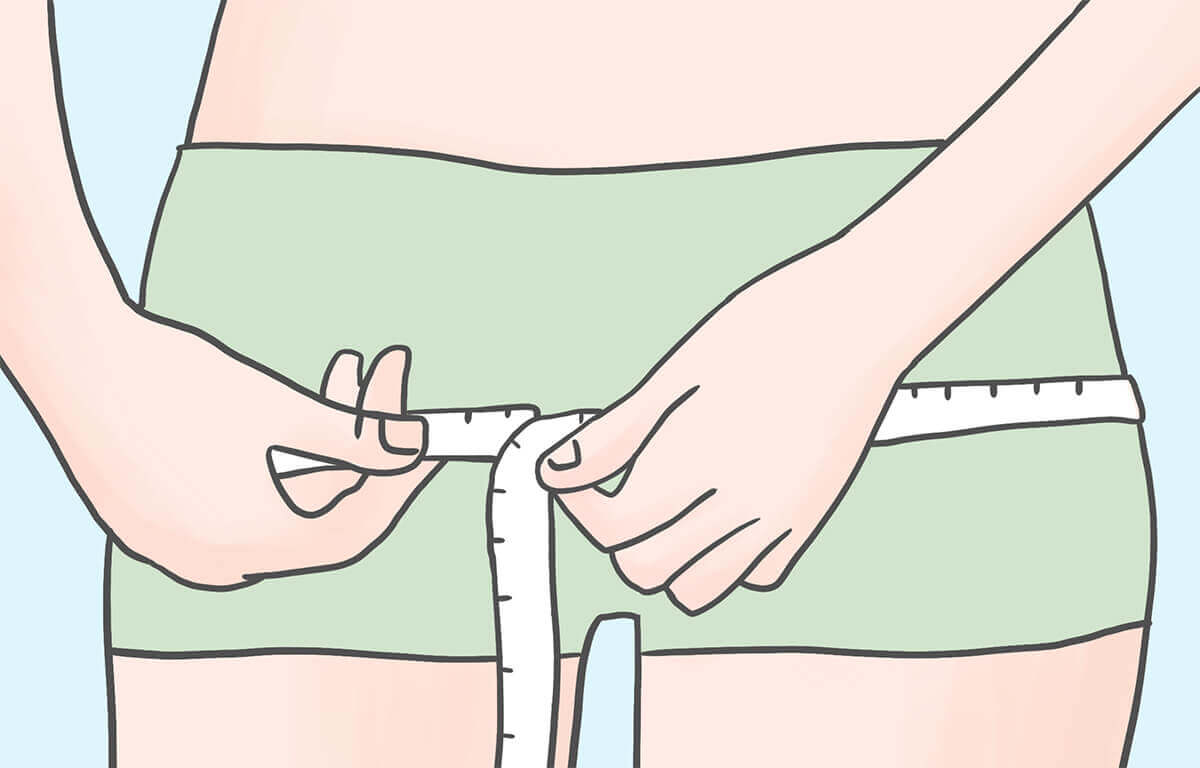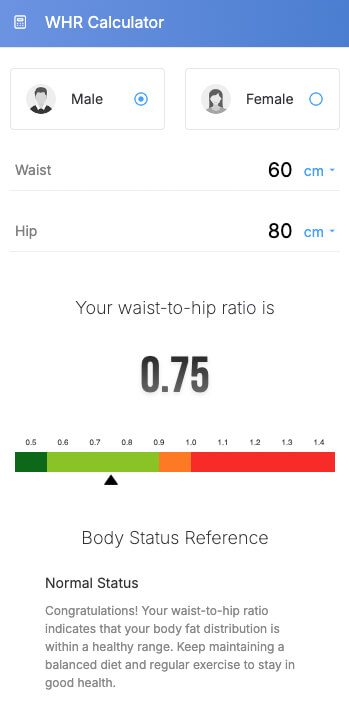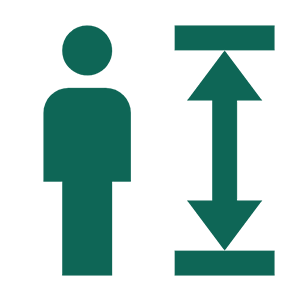Common Mistakes in Hip Measurement and How to Fix Them - Includes Waist-to-Hip Ratio Calculator
Measuring your hip circumference might seem simple, but many people make small mistakes that result in inaccurate data. These errors can affect health assessments or clothing size selection. Have you ever measured the wrong spot or made the tape too tight or too loose, only to get inconsistent results every time? In this article, we’ll uncover the most common mistakes in hip measurement and provide practical solutions. Most importantly, you’ll learn how to use a Waist-to-Hip Ratio calculator to quickly evaluate your health. Let’s get started and master the correct measurement method!
Common Mistakes in Hip Measurement
Measuring your hip circumference may seem straightforward, but small errors can lead to inaccurate data, affecting subsequent evaluations. Here are some common mistakes and how to avoid them to get accurate results every time.
Mistake 1: Measuring the Wrong Spot
- The Problem: Many people pick a random spot to wrap the tape around, sometimes near the waist, which leads to smaller measurements.
- The Solution: Hip circumference should be measured at the widest point of your hips, typically the highest point of the curve when viewed from the side. Use a mirror to ensure the tape is positioned correctly at the widest area for more accuracy.
Mistake 2: Incorrect Tape Tension
- The Problem: To avoid large numbers, some people pull the tape too tight. Others leave the tape too loose for convenience, resulting in inaccurate data.
- The Solution: The tape should lie snug against the skin without being tight enough to compress it. A good rule of thumb is to slide a finger under the tape; if it’s neither slipping nor too tight, the tension is just right.
Mistake 3: Poor Posture During Measurement
- The Problem: Sitting down, leaning forward, raising a leg, or bending over can distort the true hip circumference.
- The Solution: Stand straight with your feet shoulder-width apart and your body relaxed. Avoid unnecessary movements. Keep the tape level for accurate measurements.
Mistake 4: Large Variations in Multiple Measurements
- The Problem: Measuring your hips at different times of the day or while wearing different clothing can result in significant variations.
- The Solution: Maintain consistent measurement conditions. It’s best to measure in the morning on an empty stomach while wearing form-fitting clothes or directly on your skin.
Mistake 5: Using Improper Measurement Tools
- The Problem: Some people use random strings and measure the length with a ruler or use a rigid measuring tool, leading to inaccurate results.
- The Solution: Always use a flexible tailor’s tape, which is easy to handle and conforms to your body curves for precise measurements.
How to Measure Hip Circumference Correctly
Preparation
- Measurement Tool: A soft, flexible tailor’s tape.
- Clothing: Wear form-fitting clothes or measure directly on the skin to avoid interference from clothing thickness.
- Mirror: Use a full-length mirror to ensure the tape is positioned correctly.
Measurement Steps

Identify the Right Spot:
- Locate the widest part of your hips (usually where the hip curve is most prominent).
- Use a mirror to help ensure you’ve identified the correct point.
Adopt the Correct Posture:
- Stand upright with your feet shoulder-width apart.
- Keep your arms relaxed, and avoid bending or making unnecessary movements.
Use the Tape Properly:
- Wrap the tape around the widest point of your hips, ensuring it stays horizontal.
- The tape should be snug but not tight, maintaining a natural fit against the skin.
Record the Measurement:
- Check the tape’s reading and write it down.
- Repeat the process 2-3 times and calculate the average for the most accurate result.
How Hip Measurements Relate to Health
Hip circumference is more than a reflection of your body shape—it’s also an indicator of your health. By analyzing hip circumference, especially in conjunction with the Waist-to-Hip Ratio (WHR), you can assess various health risks. Let’s explore how hip measurements impact health and how to use the WHR tool to evaluate your condition accurately.
The Connection Between Hip Measurements and Health
Fat Distribution Indicator:
- A larger hip circumference isn’t necessarily bad. Studies show that fat stored in the hips is usually subcutaneous fat, which poses less health risk and might even offer protective benefits.
- In contrast, fat around the waist (visceral fat) poses higher health risks. Combining hip and waist measurements can provide a clearer picture of fat distribution.
The Importance of Waist-to-Hip Ratio:
- WHR is an internationally recognized indicator for assessing health risks, offering more insight than just measuring waist or hip size alone.
- Ideal WHR ranges:
- Men: ≤ 0.90
- Women: ≤ 0.85
- WHR values beyond these ranges may indicate increased risks for metabolic syndrome, cardiovascular disease, or type 2 diabetes.
Practical Health Insights Based on Hip Data
Pear-Shaped Bodies:
- Characteristics: Smaller waist, larger hips.
- Health Assessment: People with pear-shaped bodies tend to store fat in the hips and thighs, which lowers their risk of cardiovascular diseases but may lead to issues like varicose veins.
Apple-Shaped Bodies:
- Characteristics: Larger waist, smaller hips.
- Health Assessment: This body type often indicates more visceral fat, increasing the risk of cardiovascular and metabolic diseases. Lifestyle adjustments are recommended.
How to Use the Waist-to-Hip Ratio Calculator
The real value of hip measurements lies in their combination with waist measurements to calculate WHR. Using Healthycalc’s Waist-to-Hip Ratio Calculator, you can effortlessly gain insights into your health status with just a few inputs.

Steps to Use:
- Select your gender.
- Enter your waist and hip measurements.
- View your WHR and receive professional health analysis and improvement suggestions tailored to your results.












 EN
EN









